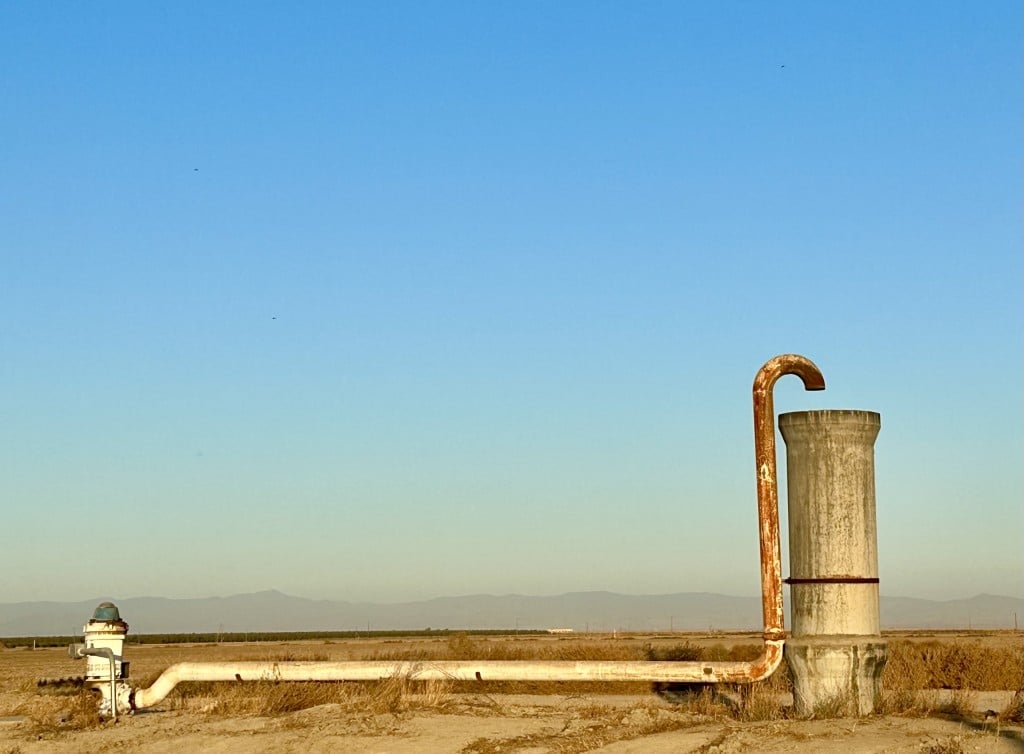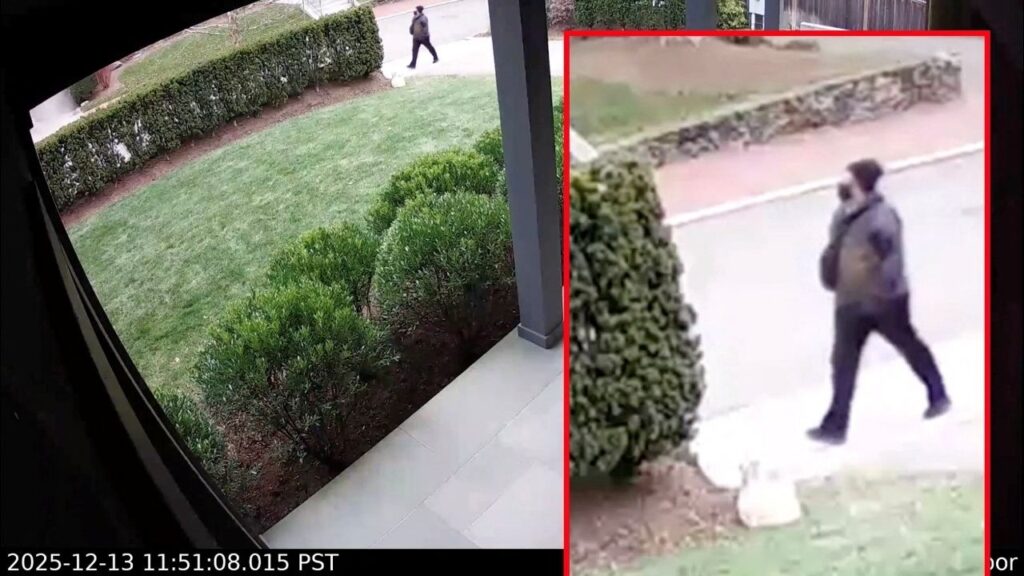A lawsuit says the gas station beneath the Fresno County Courthouse exposed workers there to cancer-causing chemicals. (GV Wire/Edward Smith)

- A lawsuit against Fresno County on behalf of 10 clients alleges they have cancer caused by leaks from the underground courthouse gas station.
- Retired judge James Ardaiz and sheriff's deputy Ernest Duran have a rare cancer caused by either radiation or benzene.
- Attorney Warren Paboojian says county has refused to providing information about the gas station's leaky tanks.
Share
|
Getting your Trinity Audio player ready...
|
Many may not know, but there’s a gas station beneath the Fresno County Courthouse.

“This is just a glimpse in time with these 10 (clients). I don’t know how many people have passed away at the courthouse from leukemia or non-Hodgkins (lymphoma) or MDS — we don’t know.” — Fresno attorney Warren Paboojian
Now, the safety of that gas station and its underground storage tanks is under question. Fresno attorney Warren Paboojian has sued the county, saying his 10 clients —all of whom once worked at the courthouse — developed rare cancers often attributed to exposure to the chemicals found in gasoline.
Paboojian says it’s unknown how much harm the fumes and leaks from the gas station and its tanks have caused to current and former courthouse employees. He adds that limited studies were done in 1990, 2007, and 2008. However, he says the tests weren’t comprehensive enough to accurately portray the dangers of the underground fueling operation.
“This is just a glimpse in time with these 10 (clients),” said Paboojian. “I don’t know how many people have passed away at the courthouse from leukemia or non-Hodgkins (lymphoma) or MDS — we don’t know.”
Paboojian Wants Answers
Jamez Ardaiz, a former Fresno County and state appellate court judge and prosecutor, was diagnosed with myelodysplastic syndrome (MDS). It’s a rare cancer often caused by exposure to radiation or toxic chemicals such as benzene, according to the Mayo Clinic.
Former Fresno County Sheriff’s deputy Ernest Duran worked with Ardaiz at the courthouse. He was diagnosed with the same cancer.
The air around gas stations throughout the country has been shown to have elevated levels of benzene, according to the Environmental Protection Agency, which classifies the chemical as a human carcinogen.
Leaky storage tanks can also seep benzene into soil and water wells. After visiting the underground gas station, GV Wire noticed the smell of gasoline after a county employee filled up an SUV.
Paboojian’s lawsuit alleges that faulty construction and poor maintenance of the gas tanks allowed dangerous levels of benzene to contaminate the air and soil around the courthouse.
“The cancer that the clients have is a benzene environmental type of cancer,” Paboojian said. “This is a cancer that all of my plaintiffs have that is a result of some type of environmental exposure.”
‘No Evidence’ Linking Illnesses to Courthouse: County
Fresno County communications director Sonja Dosti said the fueling station is regularly maintained and monitored by both county and state officials.
“The County remains very saddened by the health issues that have affected Judge James Ardaiz and apparently others, but there is no evidence linking those illnesses to any condition at the Courthouse facility,” Dosti said.
The tanks are inspected weekly, monthly, annually, and every three years, according to the county.
Soil Tests Found Contaminants Related to the Gas Tanks
Paboojian’s clients worked at the courthouse throughout the 1980s, 1990s, and 2000s.
In 1990, Fresno County changed out its 10,000-gallon storage tank at the courthouse, according to California Regional Water Quality Control Board records.

At the time, soil tests showed the presence of petroleum hydrocarbons, ethyl benzene, and xylenes, but no benzene or toluene — another hazardous chemical.
Leaks nearly two decades later prompted another soil test.
In 2007, the Fresno County Department of Environmental Health found gasoline leaking into the soil, according to internal letters posted on the EPA’s Underground Storage Tank website reviewed by GV Wire. The tests occurred as the Judicial Council of California took over management of the courthouse.
Tests showed levels of petroleum hydrocarbons and xylenes had nearly tripled from the levels detected in the 1990 test and ethylbenzene had quadrupled. Tests that time also revealed the presence of toluene.
Analysts concluded the chemicals weren’t deep enough to penetrate into the water supply at the courthouse, but records reviewed by GV Wire showed that the California Regional Water Quality Control Board identified the county as being responsible for the petroleum hydrocarbon release.
In 2011, the case was closed after work was done to fix the problem.
Cal EPA Says Soil Contamination Didn’t Pose Risks
The California Environmental Protection Agency concluded the release was not enough to pose a risk to human health, the environment, or groundwater. As the site was paved, they said skin contact would be unlikely and gasoline hydrocarbons in the soil would degrade naturally.
Paboojian however, questioned what work was done to resolve the issue. He said he has not gotten an answer from either the water board or the county.
“My preliminary information that I’ve received, documentation indicates that they’ve had problems with leakage,” Paboojian said. “They’ve had problems with benzene exposure. Over the years, we’re just not getting a clear history of the extent of the exposure.”

Benzene in the Air Far Above Allowable Maximums in 2008
Paboojian says his biggest fear is that there’s chemically contaminated air in the offices and courtrooms at the site. Tests conducted by a private company in 2008 found levels of benzene in the air far above mandated maximums.
Walnut Creek-based Environmental Resources Management found benzene levels at 1.5 and .96 micrograms per cubic meter in two testing sites at the courthouse, far exceeding the .141 concentration rate allowed by the California Office of Environmental Health Hazard Assessment.
The test, however, also showed a .97 rate in the air around the courthouse, “reflective of the conditions at the site,” the report read.
The testing done by the county has not been extensive enough, Paboojian contends. He’s tried to have soil and air tested, but he said the county has resisted.
Paboojian hopes the lawsuit will reveal what testing was done by the county.
“We’re not getting an accurate picture of what’s gone on there in 50 years, because the county’s unwilling to cooperate even though they still have employees working there,” Paboojian said.
RELATED TOPICS:
Categories



















